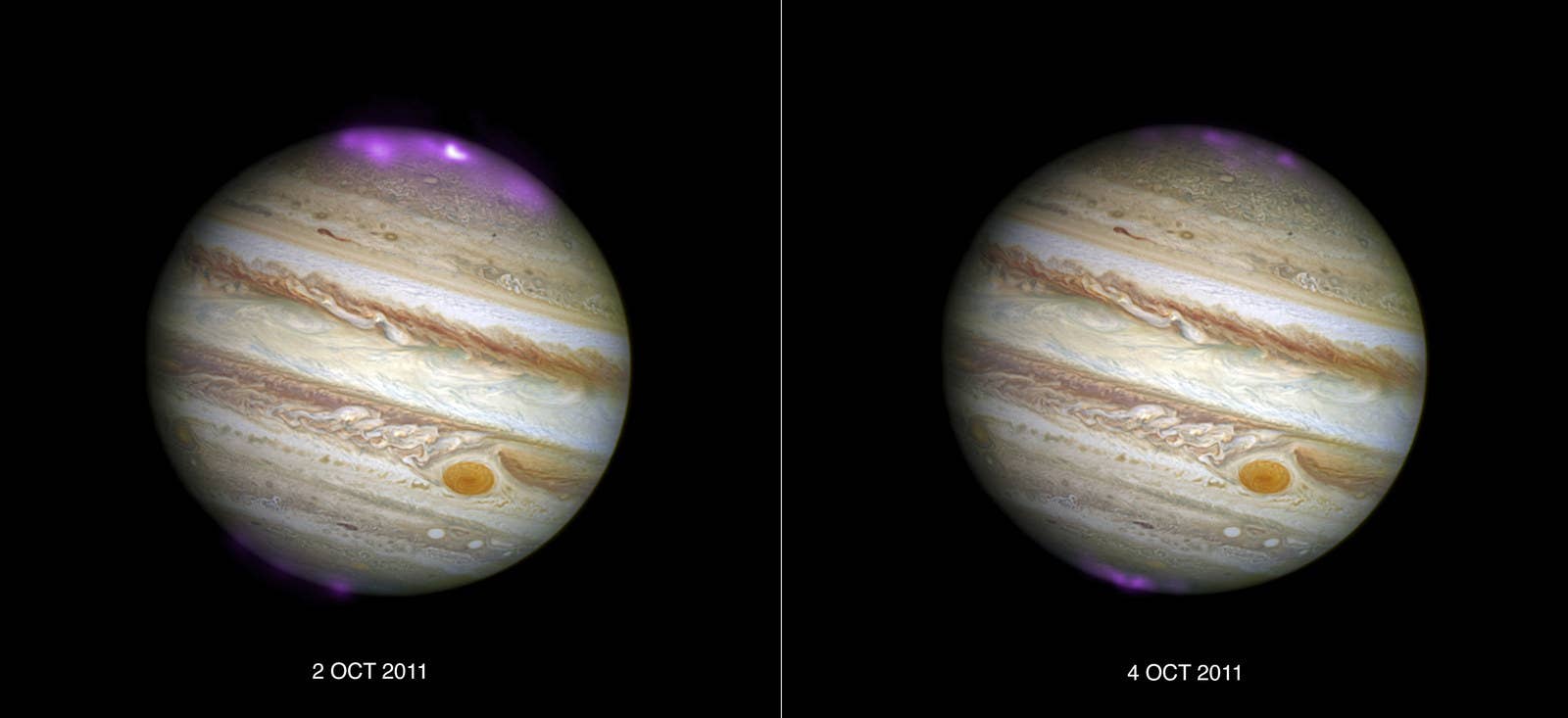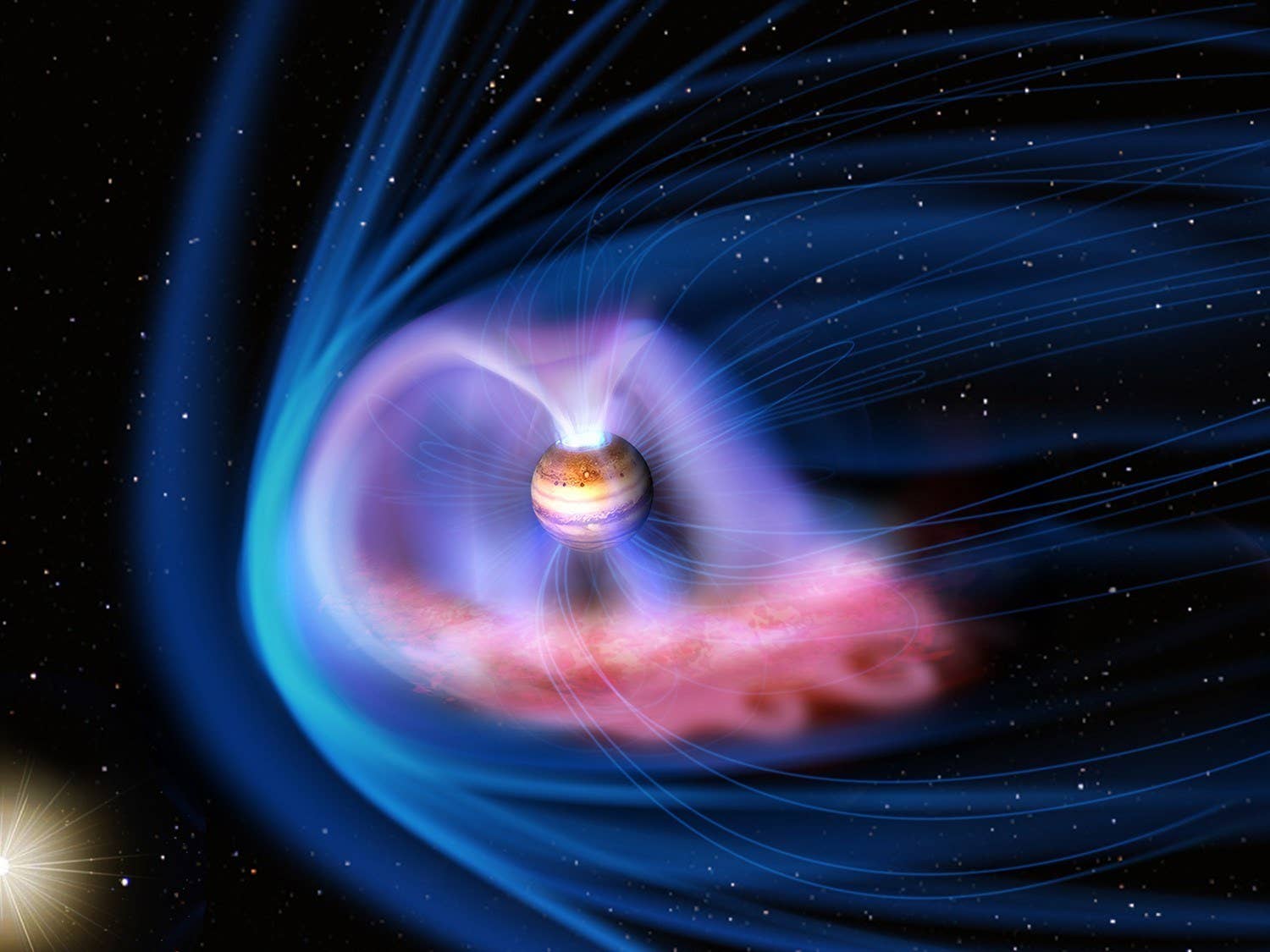Astronomers pointed an X-ray telescope at Jupiter right at the moment a solar storm from the sun hit the planet, and this is what they saw:

It happened in 2011, but astronomers have just published a paper about the event in the Journal of Geophysics Research: Space Physics.
The sun is constantly spewing out charged particles into space in the form of a solar wind. It also emits bursts of particles called coronal mass ejections (CMEs). They race through space at several million miles per hour. When they reach Jupiter, they interact with the planet's own magnetic field.
Astronomers already knew Jupiter experiences northern lights just like Earth, but this is the first time they have specifically looked for changes in the lights during a solar storm. They tracked the impact of a CME on Jupiter's aurora by looking at the X-rays emitted from the lights during two 11-hour periods in October 2011, when they knew a CME was going to hit, using NASA’s Chandra X-Ray Observatory.
It turns out the aurora created was eight times brighter than normal, and hundreds of times more energetic than the ones we get on Earth. You can see the difference in the composite photo above, which shows the X-ray data overlaid on to an optical image of Jupiter taken by the Hubble Space Telescope.

When the solar wind intensifies during a solar storm, it pushes Jupiter's magnetic field around, shifting the boundary between the solar wind and Jupiter's magnetic field by 2 million kilometres. The interaction at this boundary creates the high-energy X-rays you can see in the bright spot at the top of Jupiter's northern lights.
William Dunn, lead author on the study and a PhD student at UCL Mullard Space Science Laboratory, said in a press release: "There's a constant power struggle between the solar wind and Jupiter's magnetosphere. We want to understand this interaction and what effect it has on the planet. By studying how the aurora changes, we can discover more about the region of space controlled by Jupiter's magnetic field, and if or how this is influenced by the sun."
NASA's Juno mission arrives at Jupiter later this year and astronomers can't wait to get their hands on more data that will let them map the planet's magnetic field and observe more aurora, among other things.
